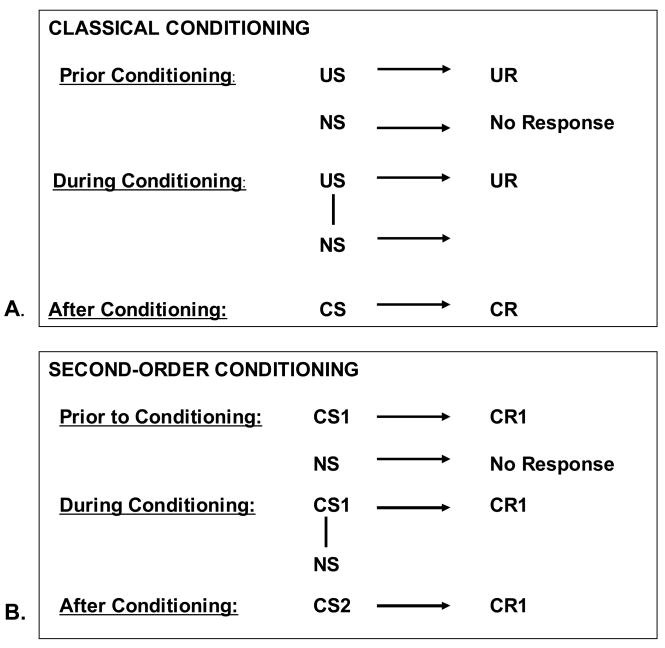Figure 1.
Classical conditioning
A. Basic process of classical conditioning: through the repeated association of a neutral stimulus (NS) with an unconditioned stimulus (US), the neutral stimulus will produce the same reaction as the US. The unconditioned reaction (UR) that was produced by the US is elicited by the NS after the conditioning process and is called conditioned reaction (CR).
B. Second-order conditioning: Once the learning process has taken place and the CS is able to elicit the CR, the CS can be paired with a new neutral stimulus, which will then also elicit the CR. CS1 refers to the CS, which is originally paired with the US and can elicit the CR1, which was originally elicited by the US. CR2 refers to the second CS, which is able to elicit the CR1 through its association with the CS1. However, the response evoked by the second order CS is not necessarily the same as that elicited by the first order CS, i.e., CR1. Often no overt response is evoked or the form of the CR can be very different if the CS 1 and CS 2 are of different modalities (Gewitz and Davis, 2006).

